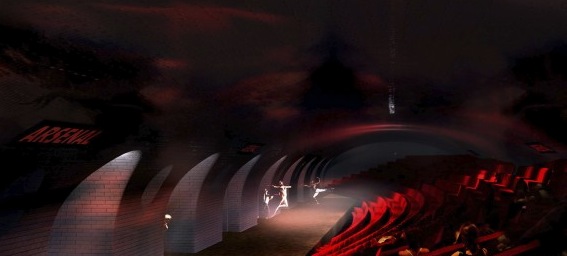
We exist in a brief moment of opportunity to reinvent our democracy as The Senate of Canada is challenged and reshaped by Parliamentarians.
Liberal Leader Justin Trudeau has de-franchised Liberal Members of the Senate, proposing further changes that would create a replacement system for Senators similar to the Order of Canada; Official Opposition Leader Tom Mulcair has renewed calls for Senate abolition; The Harper Government has already requested clarification from The Supreme Court of Canada about what reforms are Constitutionally possible.
The Senate of Canada, modeled on The House of Lords, contains 105 members and came into being through The British North America Act in 1867. Senators are appointed by The Governor General upon the advice of the PM. A ‘sober house of second thought’ that legislation must pass through to become law, the only qualifications required to be a Senator are that one must be both older-than-30 and Canadian. Over the years this has become largely a patronage appointment for party loyalists.
The three major parties are at odds with one another about how our democracy should develop. Both the NDP and Conservatives are opposed to Trudeau’s suggestion we should continue to appoint and not elect the people who draft and pass our laws. Both Liberals and Conservatives prefer reform to the Constitutionally-challenged proposal by the NDP who have never had a Senator to “Roll Up The Red Carpet”. The NDP and Liberals are united in their frustration at eight years of talking about Senate reform, while promoting 59 Conservative Senators.
This impasse can be resolved through the singular mechanism of the The Governor General by incorporating other titles the position already awards to create a Senate that is a creative meritocracy.

The Senate need not be reformed using a system similar to The Order of Canada as Greg Sorbara suggested in the Toronto Star, six months before Justin Trudeau re-suggested the proposal this January. A much simpler and immediate solution would be a Senate comprised of actual members of The Order of Canada. Rather than create a second system to discover exemplary Canadians, we should remain with the impartial, non-partisan system that is already in place to identify the best and brightest as awarded by The Governor General.
The order has a three-level hierarchy of Member (C.M.), Officer (O.C.) and Companion (C.C). These levels of achievement could be represented proportionally, or through some other mechanism that recognizes these distinctions. Immediately, this would alter the quality and ability of our Senators from ‘breathing person born before 1984’ to ‘best country has to offer’.
This revitalized cohort of Senators would be tasked with contributing to Parliament in innovative ways that leaves the drafting of legislation to elected representatives. Following The Speech From The Throne by The Governor General laying out the Government’s priorities for the year, these Senators would be tasked with investigating the surrounding issues and representing them through artistic practice.
This would be facilitated by those possessing another honour bestowed by the GG: Governor General’s Arts Award Winners in Performing Arts, Literature, History, Visual and Media Arts, and Architecture. Authors could be paired with scientists, statisticians with sopranos, judges with directors, academics with transmedia artists, farmers with architects, and infinite likeminded variations.
The short distance between The Senate and The National Arts Centre should lead to a formal arrangement between two institutions, both of which are already directly funded by Parliament. There will be a significant amount of artistic direction and administration required for these reforms to be implemented. Fortunately, it will be relatively easy to connect the two physically through underground tunnel beneath Wellington St., for The NAC to seamlessly take on its new role of facilitator of this multiplicity of relationships between Members of The Order of Canada, GG Winners, and the works and presentations they will create in The Senate.
The Senate itself will be transformed into a multi-purpose venue that will allow intense exploration and presentation of these issues as well as access for Canadians. The single biggest tourist attraction in Ottawa, it will act as a theatre, museum, concert hall, studio, digital laboratory, and workspace. An open-source intellectual crucible, The Senate will forge great and unprecedented responses to the issues elected Parliamentarians in The House of Commons will be drafting legislation to face.
An increasingly fragmented and digitally integrated 21st Century requires a government that can inspire, inquire, reflect and debate with rigour. While Parliamentary committees and debate will investigate the nuts and bolts of bills; the creative meritocracy in The Senate will complement this work by engaging in non-linear and imaginative practices related to the legislation. Embracing both rational knowledge and the power of creative thought, The Senate of Canada will become our strategic advantage as a nation that has a pro-active elite body to explore the problems we face and relate them to Members of Parliament and all Canadians.
Change is coming to The Senate of Canada. At this moment in time, when reform seems inevitable, but no one knows what form it will take, Creative Change in The Senate is possible. An onsite workspace/venue, populated by the brightest Canadians, partnered with our most exciting artists, it will become a model for advanced democratic engagement globally. Our Provincial Parliaments function admirably without an upper-house reviewing their legislation, now is the time to transform our Federal upper-house into an institution that truly prizes higher
thought.
.@SalmanRushdie quotes V. Havel on Lou Reed: “Why, do you think we called it the Velvet Revolution?” http://t.co/qLmG6xO8HV ht @pswidlicki
— Sander Wagner (@sanderwagner) October 28, 2013









